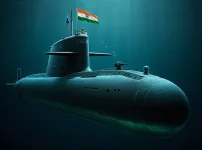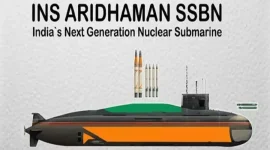
A recent report by the Stockholm International Peace Research Institute (SIPRI) has reignited discussions on India's nuclear posture, highlighting the significant role of submarine-launched ballistic missiles (SSBNs) and Multiple Independently Re-entry Vehicles (MIRVs) in its expanding arsenal.
According to SIPRI, India now possesses over 172 nuclear warheads, surpassing Pakistan's estimated stockpile for the first time. This growth is fueled in part by advancements in two key areas:
Arihant-class SSBN Fleet
These ballistic missile submarines form the cornerstone of India's sea-based nuclear deterrence strategy. Two Arihant-class submarines are already operational, providing a highly mobile and survivable launch platform for nuclear weapons.Crucially, two more advanced variants, the S4 and S4*, are under development. These new submarines are expected to require a larger stockpile of deployable warheads to maintain their deterrent capability.
Agni-5 MkII Missile with MIRVs
The successful test of the Agni-5 MkII missile equipped with MIRVs marks a significant leap forward for India's nuclear capabilities.MIRVs allow a single missile to carry multiple independently targeted warheads, significantly increasing its destructive potential and making it more challenging for missile defenses to intercept.
The combination of these advancements – the expanding SSBN fleet and MIRV technology – is a key driver behind India's growing nuclear stockpile.
While the exact size of India's planned arsenal remains unclear, some analysts predict it could reach 250 warheads, likely motivated in part by the need to counter China's growing nuclear arsenal (estimated at over 400 warheads).


